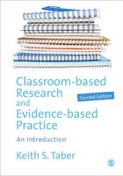Educational Research Methods

A site to support teaching and learning...

Anonymity of research participants
This is a personal site of Keith S. Taber to support teaching of educational research methods.
(Dr Keith Taber is Professor of Science Education at the University of Cambridge.)
2016
All research has to be informed by a strong sense of ethics.
Research ethics is important in planning and carrying-out research, and also when writing-up. One of the issues that needs to be considered in writing-up research is protection of the identify of participants.
Should research participants be anonymous in reports?
The ‘default’ assumption in writing-up educational research is that participants are not identified in reports, either by being directly named, or though offering sufficient information to allow them to be recognised. However anonymity may not always be desirable or possible.
Assumed names
It is common practice to use assumed names for participants (individuals and institutions such as schools) in place of their actual names, when it is deemed appropriate to protect their identities in reports. It is possible to instead refer to ‘teacher A’, ‘pupil 5’, ‘school X’ or similar, and in some forms of research where participants are sampled through an empirical or statistical strategy to be representative of a broader population this may be considered appropriate.
However, when research has a ‘qualitative’ nature, and especially where it has an idiographic character valuing the individual as informants in their own stead, it is usually considered appropriate to use realistic (and usually gender relevant and culture relevant) names. This is not dishonest as long as the report clearly explains that assumed names are used to protect the anonymity of the participants.
Thick description
In some forms of research, such as case study, it is considered appropriate to offer a thick description of the context of the research. There may then be a balance to be made between providing enough information to give a detailed picture of the research context, and not so much information that participants may be identified form the information provided.
For example, Tobin, Kahle and Fraser (1990) reported their extended engagement in the field in one secondary school where they collected a wide range of data, and worked in particular with two teachers given the assumed names of Sandra and Peter. Some of the comments about ‘Peter’ would generally be seen as unfavourable, and might even bring into question his suitability for working with children as a teacher.
Tobin, K., Kahle, J. B., & Fraser, B. J. (Eds.). (1990). Windows into Science Classrooms: problems associated with higher-level cognitive learning. Basingstoke, Hampshire: Falmer Press.
Although the school is not named, many people will be aware of the project, and those in the school at the time will know who Peter was (see Taber, 2013, pp.239-241 for a discussion of this example).
A research report by Coll and Treagust (2001) informed readers that "pseudonyms have been used to protect participants’ identities" (p.361).
Coll, R. K., & Treagust, D. F. (2001). Learners' mental models of chemical bonding. Research in Science Education, 31(3), 357-382.
However in offering sufficient detail to help readers feel they knew something about participants it is possible that their identities could be revealed. For example it is quite possible there is only one person who would have fitted the rather precise information given about ‘Nigel’ (see Taber, 2013, pp.238-239 for a discussion of this example).
Taber, K. S. (2013). Classroom-based Research and Evidence-based Practice: An introduction (2nd ed.). London: Sage.
